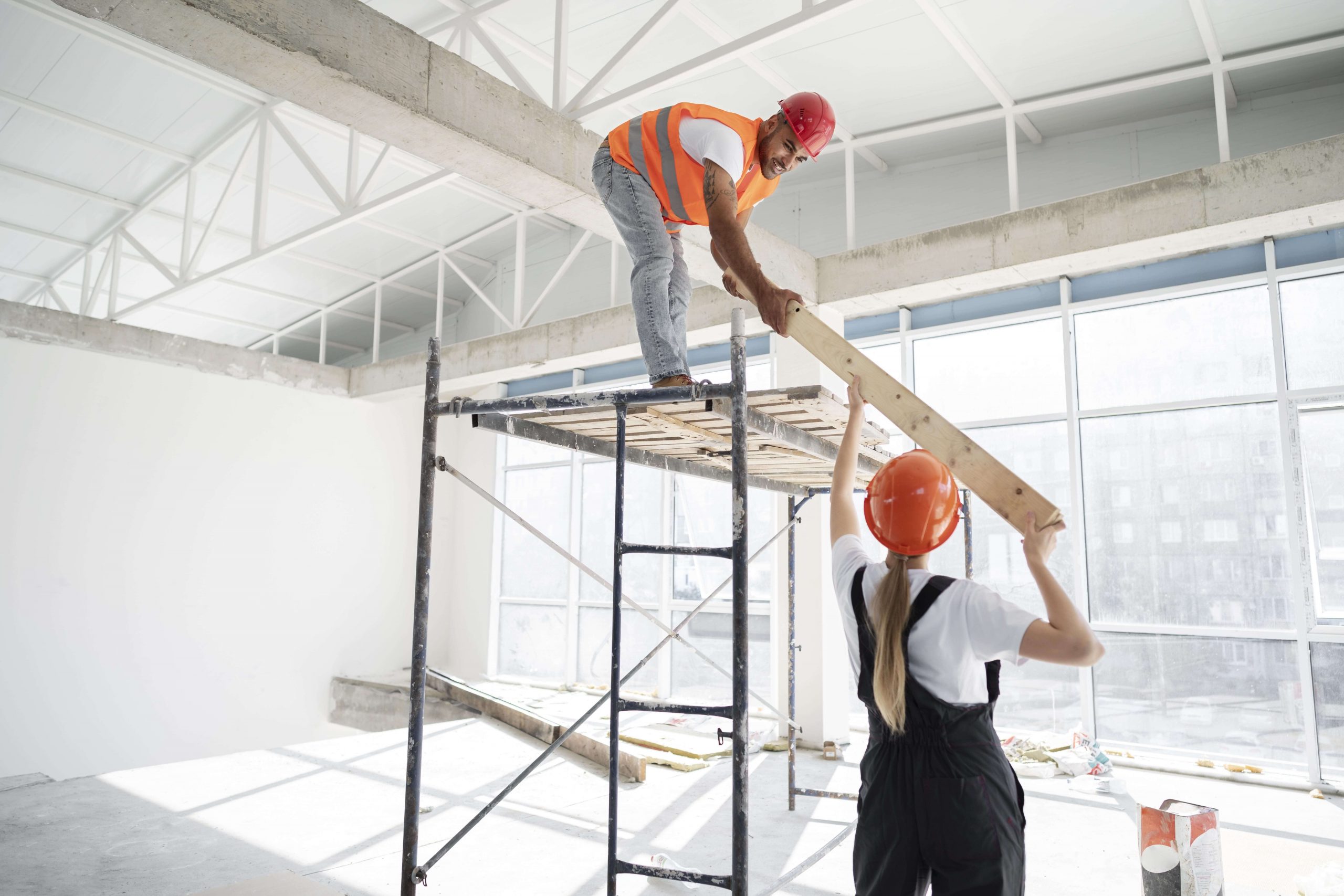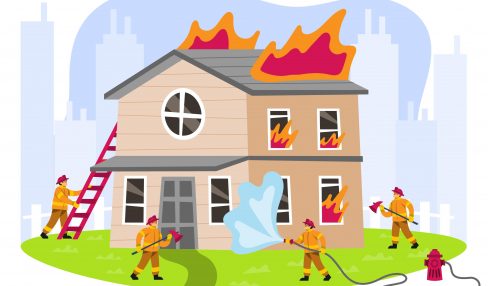Why Building Maintenance Starts Before the Doors Even Open?
29 July 2025
6 Mins Read

- Planning For Maintenance Isn’t Extra: It’s Essential
- Common Types Of Building And Facility Maintenance
- The Features You Don’t See Are the Ones That Matter Most
- 1. Easy Access Means Faster Fixes
- 2. Safety Isn’t Just For Emergencies
- 3. Maintenance Affects How Long A Building Lasts
- When Design And Maintenance Work Together For Your Business?
- When Maintenance Is An Afterthought, Everything Gets Slower
- What You Don’t Plan For Will Catch Up Eventually
- Why Does This All Matter?
When people think about building something new, most focus on its appearance—glass walls, clean lines, and cool lighting. But the stuff that keeps everything working?
That is usually ignored until a problem arises. And by then, fixing it is way harder than it needs to be.
That’s why smart building maintenance is right from the beginning. Before anyone even unlocks the front door.
Planning For Maintenance Isn’t Extra: It’s Essential
Imagine trying to fix something inside a wall without any way to reach it. Or needing to get under the floor but finding out there’s no hatch, just solid concrete. That happens more often than you’d think.
If you don’t plan for maintenance when the building design is in progress, you’ll end up spending more later, either tearing things apart or working around problems that could’ve been avoided. It’s not about adding more stuff. It’s about putting in the right stuff in the right places.
Simple things, such as access panels, service routes, or floor doors, make it possible to access plumbing, wiring, or HVAC systems without causing a mess every time.
Common Types Of Building And Facility Maintenance
When it comes to building maintenance, it consists of a wider variety of tasks. These common activities must be performed on a regular basis, including;
- Repairing and maintaining all the assets inside the building (elevators, HVAC systems, emergency generators, and servers)
- Washing and cleaning different surface tops (windows, bathrooms, floors, gutters, and handrails)
- Repairing and maintaining the building (walls, windows, doors, carpentry, and roof)
- Maintaining the property outside and all around the building (driveways, landscaping, and sidewalks)
The Features You Don’t See Are the Ones That Matter Most
Think about it—floors aren’t just something you walk on. In commercial buildings, they often hide everything from sprinkler valves to electrical panels. And if you can’t get to those things fast, building maintenance slows down. Worse, it might be unsafe.
That’s where floor doors come in. Good ones are strong, flush with the floor, and built to last. You don’t notice them when they’re working right.
But if they’re cheap or badly installed? They squeak, shift, or break. And that’s not just annoying—it can be dangerous.
There are smart ways to plan around this. If you ever need to buy floor doors online, look for ones made for heavy loads, with safe opening mechanisms.
That way, the people doing the repairs or inspections won’t be wrestling with hardware while trying to keep the building running.
1. Easy Access Means Faster Fixes
When something breaks—like a pipe leaking or a cable shorting—you don’t want workers guessing where to go. Time matters. Delays result in increased damage and higher costs. However, if there’s clear, direct access, teams can get in, fix the issue, and move on.
That’s why well-placed hatches and access doors make such a big difference. You don’t need hundreds of them. Just a few, designed into the layout from the start, can save hours of work later.
It’s the kind of thing that seems boring during construction. But later? It’s what makes a building practical for living or working in.
2. Safety Isn’t Just For Emergencies
Another reason to think about maintenance early? Safety. It’s not just about keeping things running—it’s about keeping people safe while they do their jobs.
If someone has to use a ladder in a weird spot or pry up a heavy panel without a handle, that’s risky, especially in places such as hospitals, schools, or busy commercial areas. One wrong move and someone gets hurt.
Good floor doors and access points reduce that risk. They’re designed for repeated use, tested for weight limits, and built to stay in place. That’s not something you can patch later with duct tape and hope.
3. Maintenance Affects How Long A Building Lasts
Buildings don’t just wear out all at once. It happens slowly—one small issue at a time. A leak that drips for weeks. A wire that overheats. A vent that gets blocked.
If it takes too long to notice those things, or if they’re hard to reach, the damage spreads. However, if workers can identify problems early and rectify them easily, the building remains in better shape for years longer.
In this way, planning for building maintenance is akin to giving it a longer life. Less stress. Fewer repairs. More time should be allowed before anyone discusses replacing entire systems.
When Design And Maintenance Work Together For Your Business?
It’s easy to think design and building maintenance are two different things—like one is about how a building looks, and the other is what happens after everyone moves in. However, the best buildings are those where these two ideas work in harmony from the outset.
A space can look amazing and still be practical. You just have to think about the details early when you have a design and building maintenance business.
Things like where to place access points, how equipment will be accessed, or whether certain materials can withstand daily use.
Even small design choices, such as where a floor hatch is located, can either help or hinder the people who need to keep everything running smoothly.
When designers collaborate with maintenance teams and plan together, the result is smoother, safer, and more cost-effective to manage over time.
There’s less guessing, fewer surprises, and way less damage when something breaks. That’s a win for everyone—from the people building it to the ones using it every day.
So even though access features might not be flashy, they’re part of what makes a building truly work. Ignoring them during design is like building a car without including a hood. It looks fine—until something needs fixing.
When Maintenance Is An Afterthought, Everything Gets Slower
You can tell when a building wasn’t built for maintenance. Doors stick. Panels are hidden behind furniture. There’s always someone searching for the right key or trying to reach a shutoff valve that’s just out of reach.
It slows down every fix. Not because the workers are bad at their jobs, but because the building makes things harder than they need to be.
When building maintenance is built into the design, everything flows more smoothly. The people who keep things running aren’t wasting time on the basics. They’re solving problems faster and with less disruption.
What You Don’t Plan For Will Catch Up Eventually
It’s easy to overlook access features when money’s tight or deadlines are looming. But that stuff catches up later. And it always costs more to fix a poor layout than to get it right the first time.
So, whether it’s a brand-new building or a renovation, the smartest teams don’t just think about what looks good. They think about how it will work every day for years.
And that starts before the first door even opens.
Why Does This All Matter?
The buildings that work best in the long term are those that make building maintenance easy from the outset.
Good access planning—especially through strong, reliable features like floor doors—makes a huge difference in safety, speed, and costs down the road. It’s not about adding more. It’s about planning smarter.
READ MORE:



















Comments Are Closed For This Article